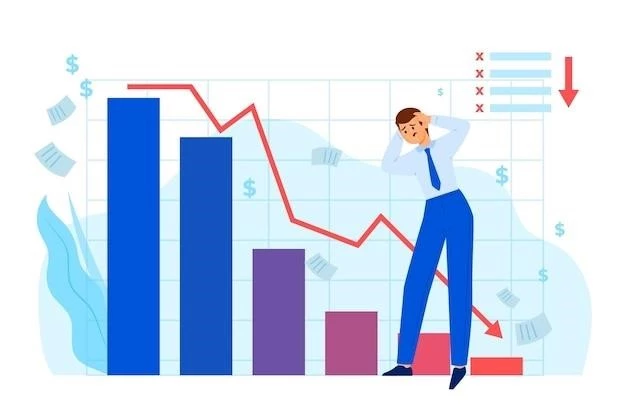In an era marked by advancements in technology and workplace safety regulations, the persistence and, in some sectors, alarming rise of work-related deaths is a sobering reminder of the fragility of human life and the constant need for vigilance in occupational safety and health practices; This article delves into the concerning trend of increasing work-related fatalities, examining contributing factors, highlighting particularly vulnerable industries, and emphasizing the critical importance of robust safety measures;
Statistical Overview
The International Labour Organization (ILO) estimates that over 2.78 million workers die from occupational accidents and work-related diseases each year. This translates to a staggering 7٫700 deaths every single day. While these figures encompass a global perspective٫ industrialized nations٫ despite stringent safety protocols٫ are not immune to this concerning trend. For instance٫ the United States Bureau of Labor Statistics (BLS) reported 5٫486 fatal work injuries in 2022٫ reflecting a 5.7% increase from the previous year;

Contributing Factors
The upward trajectory of work-related deaths can be attributed to a complex interplay of factors, including:
- Increased Production Demands: In today’s fast-paced economy, businesses often prioritize output and efficiency, sometimes at the expense of worker safety. This pressure can lead to rushed tasks, inadequate training, and fatigue, all of which increase the risk of accidents.
- Inadequate Safety Training: Proper training is paramount in high-risk industries. However, some employers, especially in developing countries or within the informal economy, may neglect comprehensive safety training due to cost concerns or a lack of awareness about its importance.
- Aging Workforce: As populations age in many developed countries, the workforce is also getting older. Older workers may be more susceptible to certain types of injuries or may require specialized safety considerations that are sometimes overlooked.
- Emerging Risks: The nature of work is constantly evolving. New technologies, materials, and processes introduce new hazards that may not be fully understood or adequately addressed by existing safety regulations.
High-Risk Industries
While workplace fatalities span across various sectors, certain industries consistently report higher rates of fatal incidents. These include:
- Construction: Construction sites are inherently hazardous environments, involving heavy machinery, work at heights, and exposure to the elements. Falls, being struck by objects, and electrocutions are among the leading causes of fatalities in this sector.
- Transportation and Warehousing: This industry encompasses a wide range of occupations, from truck drivers to delivery personnel. Motor vehicle accidents, often related to fatigue or challenging driving conditions, contribute significantly to fatalities.
- Agriculture, Forestry, Fishing, and Hunting: These sectors involve physically demanding work, often in remote locations and with exposure to unpredictable weather conditions. Machinery accidents, heatstroke, and animal-related incidents are common hazards.
- Manufacturing: While manufacturing has seen advancements in automation and safety protocols, it still involves working with heavy machinery, hazardous chemicals, and repetitive tasks, which can lead to serious injuries and fatalities.

The Imperative of Workplace Safety
The human cost of workplace fatalities is immeasurable, leaving behind grieving families, lost loved ones, and a profound impact on communities. Beyond the moral imperative, there’s a strong economic case for prioritizing workplace safety. Accidents result in lost productivity, increased healthcare costs, and potential legal liabilities, all of which can significantly impact a company’s bottom line.
Strategies for Prevention
Creating a culture of safety requires a multi-faceted approach, with employers, employees, and regulatory bodies all playing crucial roles. Key strategies include:
- Comprehensive Safety Training: Regular, mandatory safety training tailored to specific job roles and industry hazards is essential. Training should encompass hazard identification, safe work practices, emergency procedures, and the proper use of personal protective equipment (PPE).
- Promoting a Safety Culture: A strong safety culture is one where safety is not just a set of rules but an ingrained value. This involves open communication about hazards, encouraging near-miss reporting, recognizing and rewarding safe behaviors, and empowering employees to speak up about safety concerns without fear of reprisal.
- Investing in Safety Equipment and Technology: Providing workers with appropriate PPE and ensuring its proper use is crucial. Additionally, investing in safety technologies, such as collision avoidance systems in vehicles or ergonomic workstations in offices, can significantly reduce the risk of accidents.
- Rigorous Inspections and Enforcement: Regular workplace inspections by qualified safety professionals are essential to identify and mitigate potential hazards. Moreover, effective enforcement of safety regulations and holding employers accountable for unsafe practices are crucial deterrents.
- Data Analysis and Continuous Improvement: Analyzing incident and near-miss data can help identify trends, root causes, and areas for improvement in safety protocols. Continuous evaluation and refinement of safety measures based on data analysis are essential for an effective safety program.
Conclusion
The rising rate of work-related deaths is a multifaceted issue with significant human and economic consequences. Addressing this challenge requires a concerted effort from all stakeholders. By fostering a culture of safety, investing in robust training programs, implementing stringent safety protocols, and leveraging technology, we can strive towards a future where workplaces are not just productive but, above all, safe for every worker.










